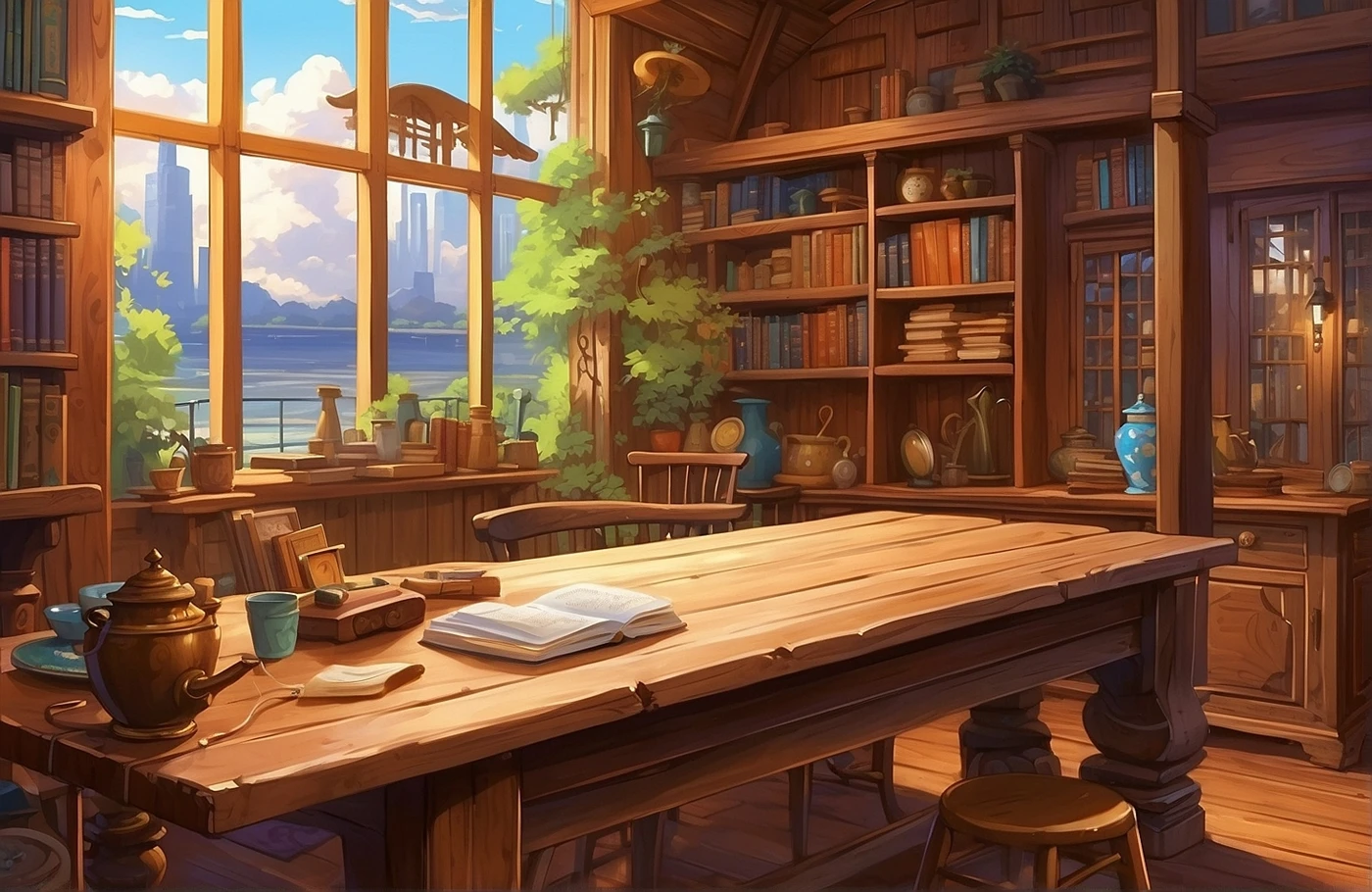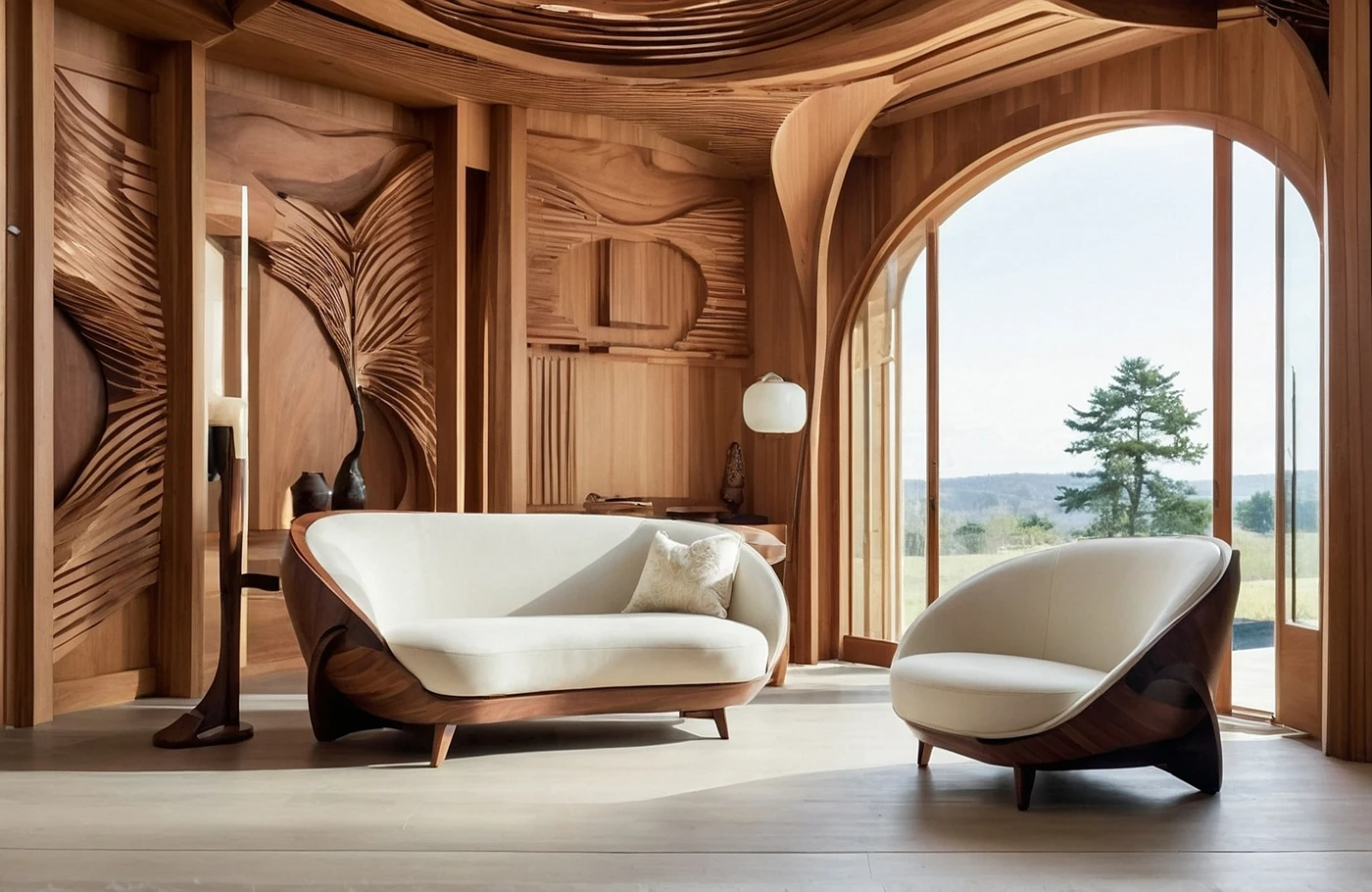A Woodworker Makes Wooden Checkerboards

The process of crafting wooden checkerboards by skilled woodworkers
Woodworking artisans possess a unique set of skills that enable them to transform raw timber into intricate and functional pieces of art. One such creation that showcases their craftsmanship is the wooden checkerboard. Let's delve into the detailed process of how skilled woodworkers meticulously craft these timeless game boards.
Choosing the Right Wood Materials
Selecting high-quality wood is the crucial first step in creating a durable and visually appealing checkerboard. Skilled woodworkers often opt for hardwoods like maple, walnut, cherry, or mahogany due to their durability and aesthetic appeal. These woods offer a beautiful grain pattern that enhances the overall look of the checkerboard.
Precision in Cutting and Sizing
Once the wood materials are chosen, the woodworker meticulously cuts them into precise squares of equal size. Accuracy in cutting is paramount to ensure that the checkerboard squares fit together seamlessly. This step requires attention to detail and the use of precision tools such as table saws, miter saws, and hand saws.
Creating the Checkerboard Pattern
Crafting a checkerboard pattern involves arranging squares of contrasting wood species in an alternating pattern. This process requires patience and a keen eye for detail to ensure that the pattern is consistent and visually appealing. Woodworkers often use clamps to hold the squares together as they glue them to a sturdy backing board.
Precision Gluing and Assembly
Gluing the individual squares onto the backing board is a critical step in the checkerboard-making process. Woodworkers apply wood glue to the back of each square and carefully press them onto the backing board in the desired pattern. Clamps are used to secure the squares in place while the glue dries, ensuring a strong and durable bond.
Sanding and Smoothening
Once the glue has dried, the checkerboard undergoes a thorough sanding process to smoothen the surface and remove any rough edges or imperfections. Skilled woodworkers use a progression of sandpaper grits to achieve a silky smooth finish on both the surface of the board and the edges of the squares.
Applying a Protective Finish
To enhance the natural beauty of the wood and protect the checkerboard from wear and tear, woodworkers apply a protective finish such as polyurethane, lacquer, or wax. This finish not only adds a lustrous sheen to the checkerboard but also seals the wood, making it more resilient to moisture and scratches.
Final Quality Checks
Before considering the wooden checkerboard complete, skilled woodworkers conduct a series of quality checks to ensure that every square is securely bonded, the surface is smooth, and the overall craftsmanship meets their high standards. Any imperfections are carefully addressed during this final inspection process.
Crafting wooden checkerboards is a meticulous process that requires skill, precision, and a keen eye for detail. Skilled woodworkers bring together their expertise and passion for woodworking to create timeless pieces that can be enjoyed for generations to come.
Different types of wood used in creating handmade checkerboards
Woodworkers take great pride in crafting handmade checkerboards using a variety of wood types, each with its unique characteristics and appeal. The choice of wood plays a crucial role in the overall aesthetics and durability of the checkerboard. Let's explore some of the different types of wood commonly used in creating these beautiful and functional game boards.
Maple Wood
Maple wood is a popular choice among woodworkers for creating checkerboards due to its fine texture and light color. It is a sturdy and durable wood that offers excellent stability, making it ideal for intricate designs and patterns. Maple's smooth surface allows for precise cutting and shaping, perfect for creating detailed checkerboard squares with clean lines.
Walnut Wood
Walnut wood is valued for its rich, dark hues and beautiful grain patterns, making it a favorite choice for creating elegant checkerboards. The deep brown color of walnut wood provides a striking contrast when paired with lighter woods like maple or cherry. Its natural luster and smooth finish give checkerboards a sophisticated and timeless look.
Cherry Wood
Cherry wood is known for its warm reddish-brown tones and distinctive grain patterns, adding a touch of elegance to handmade checkerboards. The color of cherry wood darkens over time, developing a rich patina that enhances the overall beauty of the checkerboard. Cherry wood is prized for its workability, allowing woodworkers to carve intricate designs and details with precision.
Oak Wood
Oak wood is valued for its strength, durability, and prominent grain patterns, making it a popular choice for crafting checkerboards that stand the test of time. The light to medium brown color of oak wood complements various design styles, from traditional to modern. Oak checkerboards exude a classic charm and rustic appeal, perfect for both decorative and functional purposes.
Mahogany Wood
Mahogany wood is prized for its rich reddish-brown color and smooth texture, ideal for creating exquisite checkerboards with a touch of luxury. The fine grain of mahogany adds depth and character to the checkerboard, making it a sophisticated choice for discerning enthusiasts. Mahogany checkerboards radiate elegance and style, making them a prized possession for any game room.
Exotic Woods
In addition to the traditional wood types, woodworkers often experiment with exotic woods to create unique and one-of-a-kind checkerboards. Exotic woods such as teak, ebony, and padauk offer a distinct appearance with their vibrant colors and intricate grain patterns. These exotic woods add a touch of luxury and exclusivity to handmade checkerboards, making them true works of art.
The type of wood used in creating handmade checkerboards significantly impacts the overall look and quality of the finished product. Whether opting for classic choices like maple and walnut or exploring exotic woods, woodworkers can showcase their craftsmanship and creativity through the selection of wood types. Each wood variety brings its own charm and character to the checkerboard, creating a timeless piece that is as visually appealing as it is functional.
Techniques for sanding and finishing wooden checkerboards to perfection
Woodworkers who craft wooden checkerboards understand the importance of attention to detail in every step of the process, from selecting the right type of wood to sanding and finishing techniques. Achieving a flawless checkerboard requires precision and skill, especially when it comes to sanding and finishing the wooden surface. In this guide, we will delve into advanced techniques that woodworkers employ to sand and finish wooden checkerboards to perfection.
Importance of Sanding in Wooden Checkerboards
Sanding plays a crucial role in preparing the wooden surface of a checkerboard. It not only smooths out rough patches and imperfections but also ensures that the finish adheres properly to the wood. Before starting the sanding process, it is essential to choose the right sandpaper grit. Begin with a coarser grit to remove any rough spots or uneven surfaces. Gradually move to finer grits to achieve a smooth and polished finish. Remember to sand in the direction of the wood grain to avoid damaging the fibers and to achieve a professional look.
Advanced Sanding Techniques
Woodworkers often use a combination of hand sanding and power sanding techniques to achieve the desired smoothness in wooden checkerboards. Hand sanding allows for greater control over intricate details and hard-to-reach areas, while power sanders are efficient for larger surfaces. When hand sanding, make sure to use sandpaper with a block to maintain flatness and consistency. For power sanding, start with a low grit sandpaper and progressively move to higher grits for a refined finish. Always remember to wear proper safety gear, such as goggles and a mask, to protect yourself from wood dust.
Finishing for a Professional Look
After sanding, the finishing process brings out the natural beauty of the wood and adds a protective layer to the checkerboard. Choosing the right finish is crucial, as it affects the overall appearance and durability of the piece. Common finishes for wooden checkerboards include polyurethane, varnish, lacquer, and mineral oil. Each type of finish has its unique characteristics, so it's essential to experiment on scrap wood to determine the best finish for your checkerboard.
Applying Finishes with Precision
When applying the finish, ensure that the wooden surface is clean and free of dust. Use a brush, cloth, or sprayer to apply thin and even coats of the chosen finish. Allow each coat to dry completely before applying the next one. Between coats, lightly sand the surface with a fine grit sandpaper to remove any imperfections and ensure a smooth finish. Multiple thin coats of finish provide better protection and a more professional look than a single thick coat.
Final Touches and Inspection
Once the final coat of finish has dried, inspect the wooden checkerboard carefully for any flaws or imperfections. Lightly sand any rough areas or drips with a ultrafine sandpaper to achieve a satin-smooth finish. Wipe the surface clean with a soft, lint-free cloth to remove any dust particles. Your wooden checkerboard is now ready to impress with its flawless surface and professional finish.
Mastering the art of sanding and finishing wooden checkerboards requires patience, practice, and attention to detail. By following these advanced techniques and tips, woodworkers can elevate their craft and create stunning checkerboards that are not only visually appealing but also durable and long-lasting.
Design ideas and patterns for unique wooden checkerboards
Woodworkers have a keen eye for detail and precision when it comes to creating unique wooden checkerboards. The process involves creativity, craftsmanship, and a deep understanding of different wood types and patterns. These artisanal pieces often become cherished heirlooms or statement decor items in homes. In this article, we will explore various design ideas and patterns that woodworkers can incorporate to craft exceptional wooden checkerboards that stand out.
Classic Checkerboard Pattern
The classic checkerboard pattern is timeless and elegant. It involves alternating between two contrasting wood types, usually light and dark woods such as maple and walnut. This traditional design is versatile and fits well in various interior styles, adding a touch of sophistication to any space.
Geometric Patterns
Woodworkers with a modern aesthetic may opt for geometric patterns in their wooden checkerboards. Creating patterns such as chevron, herringbone, or diamond shapes requires precision and attention to detail. These designs add a contemporary flair to the checkerboard, making it a focal point in any room.
Inlay Designs
Inlay designs involve embedding different wood pieces into a base wood to create intricate patterns and motifs. Woodworkers can experiment with various shapes, sizes, and wood types to craft beautiful inlay designs on their checkerboards. From floral motifs to geometric shapes, the possibilities are endless with inlay designs.
Personalized Monograms
Adding a personalized touch to a wooden checkerboard makes it truly unique. Woodworkers can incorporate monograms, initials, or meaningful symbols into the design to customize the checkerboard for a special touch. Whether it's a gift for a loved one or a personal project, a personalized checkerboard adds sentimental value.
Marquetry Artwork
Marquetry is the art of creating intricate designs using different wood veneers. Woodworkers skilled in marquetry can craft stunning artwork on their checkerboards, depicting anything from landscapes to abstract designs. Marquetry adds a touch of artistry and sophistication to wooden checkerboards, making them exquisite pieces of craftsmanship.
Wood Burning Techniques
Wood burning, also known as pyrography, is another way to embellish wooden checkerboards with intricate designs. Woodworkers can use a pyrography pen to burn designs onto the wood, creating unique patterns and detailing. This technique allows for endless creativity and customization in wooden checkerboard designs.
Woodworkers have a world of design possibilities at their fingertips when it comes to creating wooden checkerboards. From classic patterns to modern designs, the artistry and craftsmanship involved in making these pieces are truly remarkable. By experimenting with different techniques and incorporating personal touches, woodworkers can craft checkerboards that are not just game boards but stunning works of art that showcase their skills and creativity.
The historical significance of checkerboards and their enduring appeal in woodworking
Woodworking enthusiasts have long been captivated by the artistry and skill required to create exquisite wooden checkerboards. These timeless pieces are not only functional but also serve as stunning displays of craftsmanship. From the careful selection of wood to the precise cutting and assembly, each step in the process requires dedication and a keen eye for detail.
The History of Checkerboards in Woodworking
The origins of checkerboards can be traced back centuries, with archaeological evidence suggesting that they have been played for over 3,000 years. In woodworking, creating checkerboards became a popular practice during the 18th century when the art of marquetry, the craft of applying pieces of veneer to form decorative patterns, was at its peak. Woodworkers began experimenting with different wood types and designs to produce checkerboards that were not only playable but also visually striking.
Techniques Used in Crafting Wooden Checkerboards
Crafting a wooden checkerboard requires a combination of traditional woodworking techniques and modern tools. Woodworkers start by selecting high-quality wood species such as maple, walnut, cherry, or mahogany. Each wood type brings its unique color and grain pattern to the final piece. The selected woods are then cut into uniform strips, arranged in alternating colors, glued together, and sliced to create the characteristic checkerboard pattern.
Design Variations and Customization Options
Woodworkers have the flexibility to experiment with various design variations when creating wooden checkerboards. Some may opt for classic black and white squares, while others may incorporate different colors, wood types, or even inlays to add a personalized touch. Customization options also extend to the size of the board, with some artisans crafting miniature checkerboards for travel and larger ones for home entertainment.
Tools and Materials Required
To bring a wooden checkerboard to life, woodworkers rely on a set of essential tools and materials. These may include a table saw for precise cutting, a planer to ensure uniform thickness, clamps for securing pieces during glue-up, sandpaper for a smooth finish, and a food-safe finish to protect the wood and enhance its natural beauty. Attention to detail is paramount at every stage of the process to achieve a flawless final product.
The Enduring Appeal of Wooden Checkerboards
Despite advancements in technology and the availability of mass-produced alternatives, wooden checkerboards continue to hold a special place in the hearts of both craftsmen and enthusiasts. The warmth of natural wood, the intricate patterns, and the satisfaction of creating something by hand all contribute to their enduring appeal. Whether displayed as a decorative piece or used for a friendly game, wooden checkerboards serve as a testament to the time-honored tradition of woodworking.
As woodworking techniques evolve and artistic expression continues to flourish, the art of crafting wooden checkerboards remains a beloved tradition. From honoring the historical significance of these timeless pieces to embracing modern design trends, woodworkers find endless opportunities to showcase their creativity and skill through the creation of these exquisite game boards.
Conclusion
Woodworkers who delve into the meticulous craft of creating wooden checkerboards bring forth a unique blend of artistry and precision. With a keen eye for detail and a passion for woodworking, these artisans embark on a journey that involves selecting the finest woods, employing refined techniques, and infusing their creations with historical charm. The process of crafting wooden checkerboards is a labor of love that yields timeless pieces of functional art.
In the realm of woodworking, the choice of wood plays a pivotal role in shaping the character of a handmade checkerboard. From the rich hues of mahogany to the elegant grain patterns of maple, each type of wood imparts its distinct beauty to the finished product. Skilled woodworkers often select contrasting woods to create striking visual effects on the checkerboard surface, elevating its aesthetic appeal and making it a true centerpiece in any setting.
Sanding and finishing are critical stages in the creation of wooden checkerboards, requiring patience and precision to achieve a flawless surface. Woodworkers employ various sanding techniques to smooth out rough edges and imperfections, ensuring a tactile finish that beckons to be touched. The application of wood finishes such as oils or varnishes not only enhances the natural beauty of the wood but also provides protection against wear and tear, preserving the checkerboard for generations to come.
When it comes to design ideas and patterns for wooden checkerboards, the possibilities are as vast as the woodworker's imagination. From classic checkerboard patterns in black and white to intricate geometric designs, woodworkers can experiment with different arrangements to create one-of-a-kind pieces. Some craftsmen draw inspiration from historical motifs, while others infuse modern elements to put a contemporary spin on this timeless game board.
The historical significance of checkerboards dates back centuries, with roots tracing to ancient civilizations where similar game boards were unearthed in archaeological sites. The enduring appeal of checkerboards lies in their simplicity, offering players an engaging pastime that transcends cultural boundaries. In woodworking, the creation of wooden checkerboards pays homage to this rich tradition, blending craftsmanship with tradition to produce heirloom-quality pieces that resonate with people of all ages.
In essence, the art of crafting wooden checkerboards embodies a harmonious blend of tradition, creativity, and skill. Woodworkers who specialize in this craft not only create functional game boards but also weave together a narrative of heritage and craftsmanship. Through the careful selection of wood, meticulous attention to detail, and a passion for woodworking, these artisans carry on a time-honored tradition that continues to captivate enthusiasts worldwide.



